Coins from the year 1066 have been sold at auction
- Published
- comments
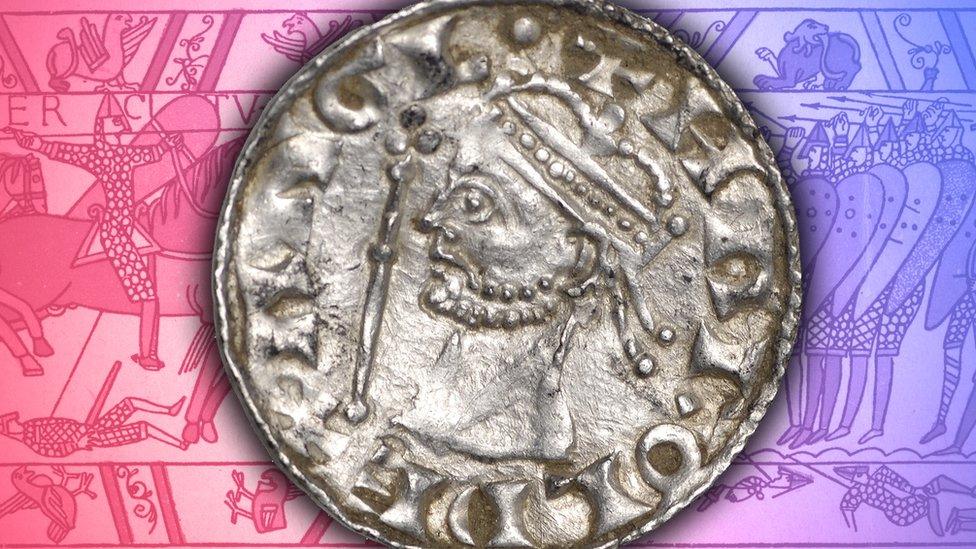
A treasure-trove of coins thought to be almost 960 years old have been sold for £325,560!
The 122 pennies were discovered five year ago by two metal detectorists near Braintree in Essex.
The Anglo-Saxon coins are thought to have been buried the same year that the Norman army conquered England, 1066.
The auction house which sold the coins were amazed at the interest they generated, selling the coins for much more than they had estimated.
It's thought all of the coins were buried, most within five years of having been minted.
Coins are known to suffer damage and become severely worn after being in circulation for a number of year.
The average life of a coin in active circulation these days can be in excess of forty years, but in the past it would have been less than this.
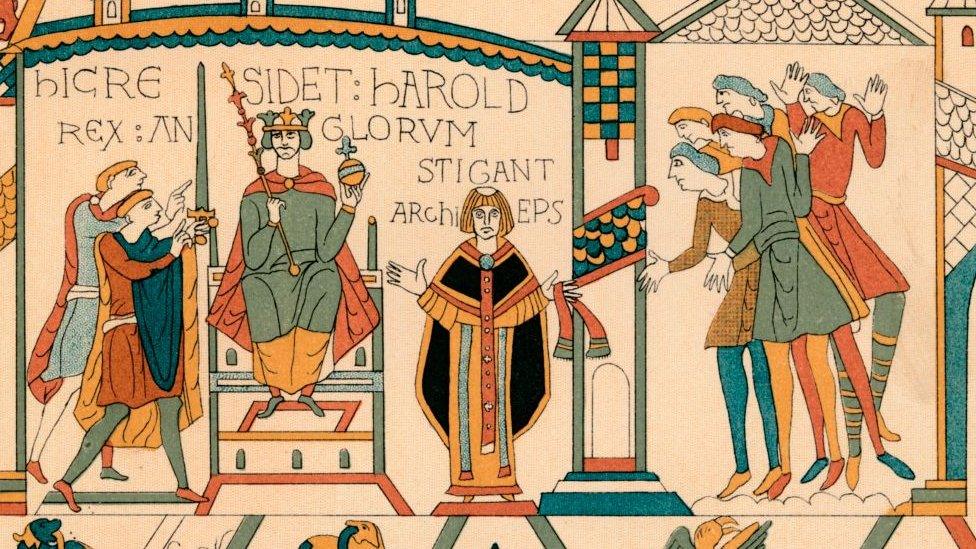
Harold's coronation was depicted on the famous Bayeux Tapestry
Why is the year 1066 important?
On 6 January 1066, English King Harold II was crowned at Westminster Abbey, just a day after the previous king Edward the Confessor, had died.
Edward the Confessor had no heirs, and so Harold was elected to take the throne by the king's council.
But Harold's position as king was not certain, with some saying he had promised to support rival Duke William of Normandy's claim to England's throne.
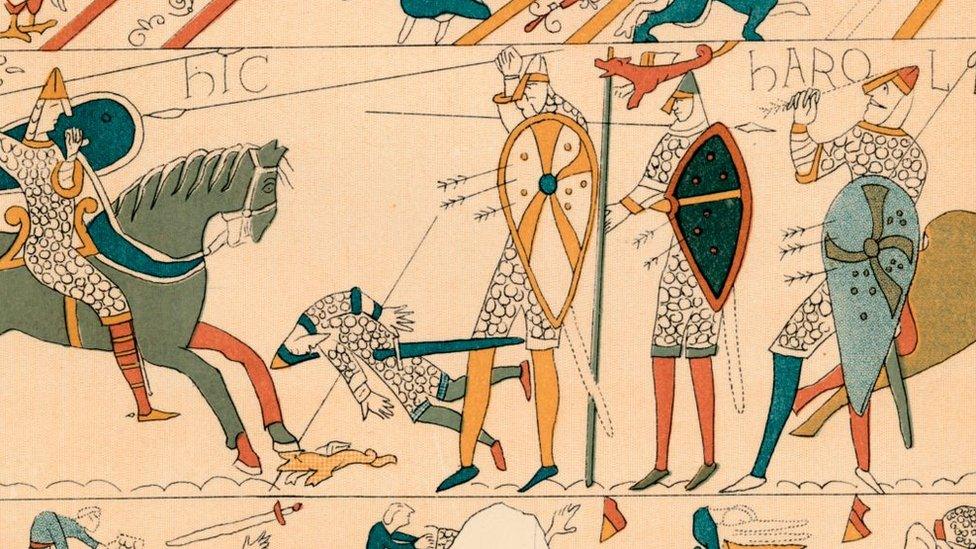
Historians believe King Harold II may have been killed by an arrow in the eye during the Battle of Hastings
The King of Norway, Harald Hardrada, and King Harold's brother Tostig also wanted to claim England's throne.
After a series of bloody battles, King Harold II was killed on 14 October 1066 and the Duke of Normandy emerged victorious.
He became known as William the Conqueror - and his victory was immortalised in the famous Bayeux Tapestry.
You can read more about the history of the Battle of Hastings here.
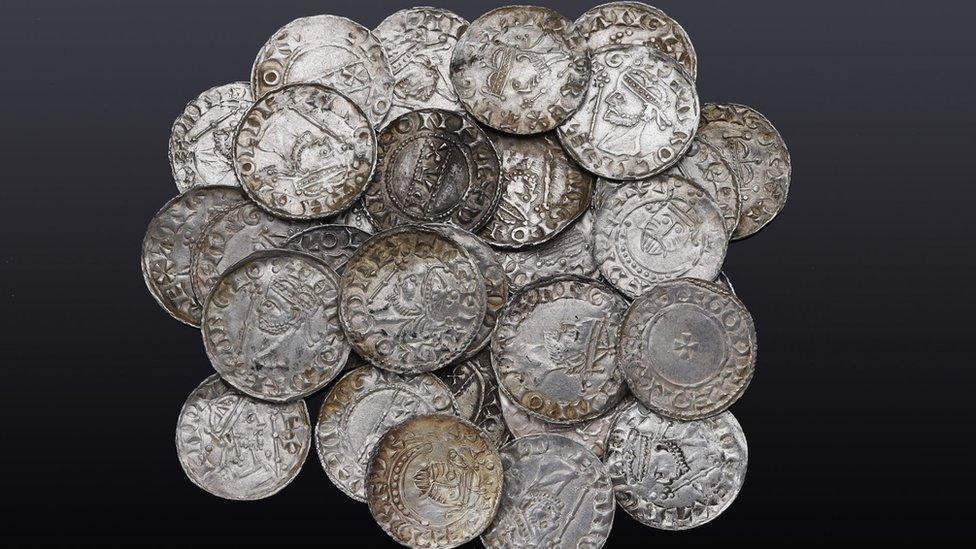
Coin expert Bradley Hooper believed they were worth a lot of money at the time they were buried
How were the coins found?
A pair of detectorists - people who use metal detectors to find artefacts - found the coins in a field in Essex in 2019.
The first coin they found was buried only 4 inches (around 10 centimetres) under the ground.
After their first find, they kept searching and over several months discovered 144 coins.
Sixteen of those coins were then bought by Colchester Museum and Cambridge's Fitzwilliam Museum, but 122 were returned to the detectorists.

Bradley Hooper, who works at the auctioneer house where the coins were sold, said they would have been worth a lot of money back in the day.
Mr Hooper said the coins "might not relate directly to the events of 1066" but that the owner must have met "some great personal misfortune" to not be able to recollect their buried treasure.
The coins had expected to sell for around £180,000, but sold for nearly double that amount.
The money will be shared between the two detectorists who discovered the coins and the owner of the land where the coins were found.
- Published13 October 2023
- Published21 February 2024
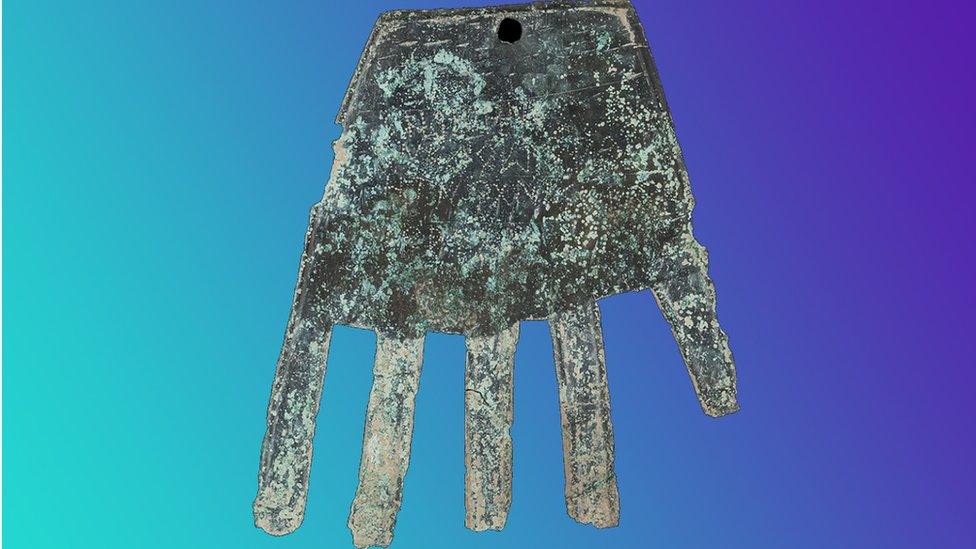
- Published6 April 2023

